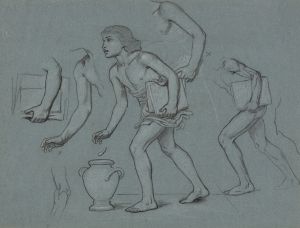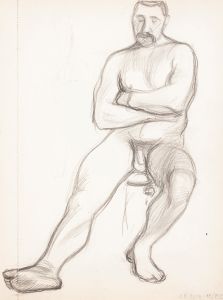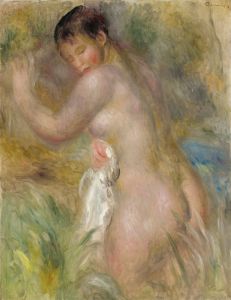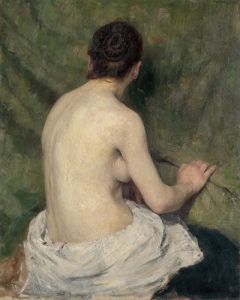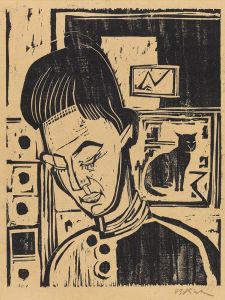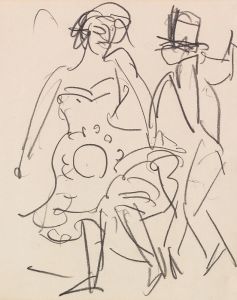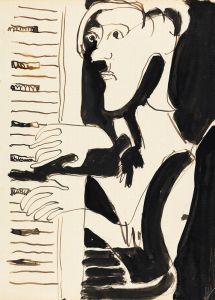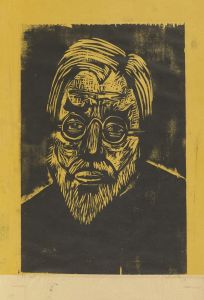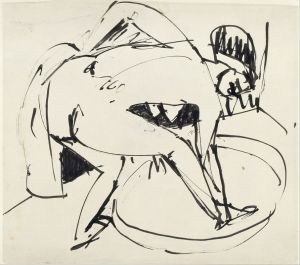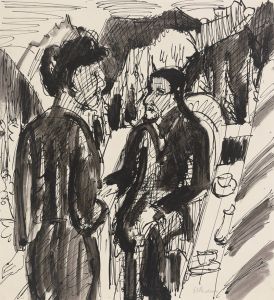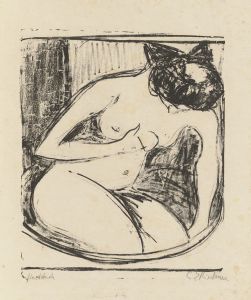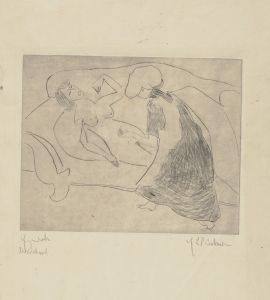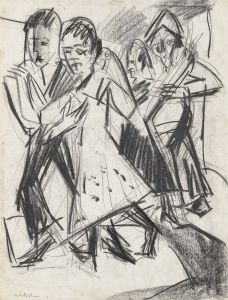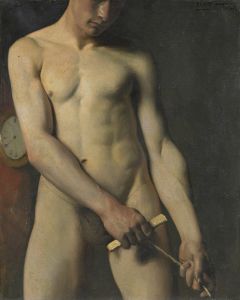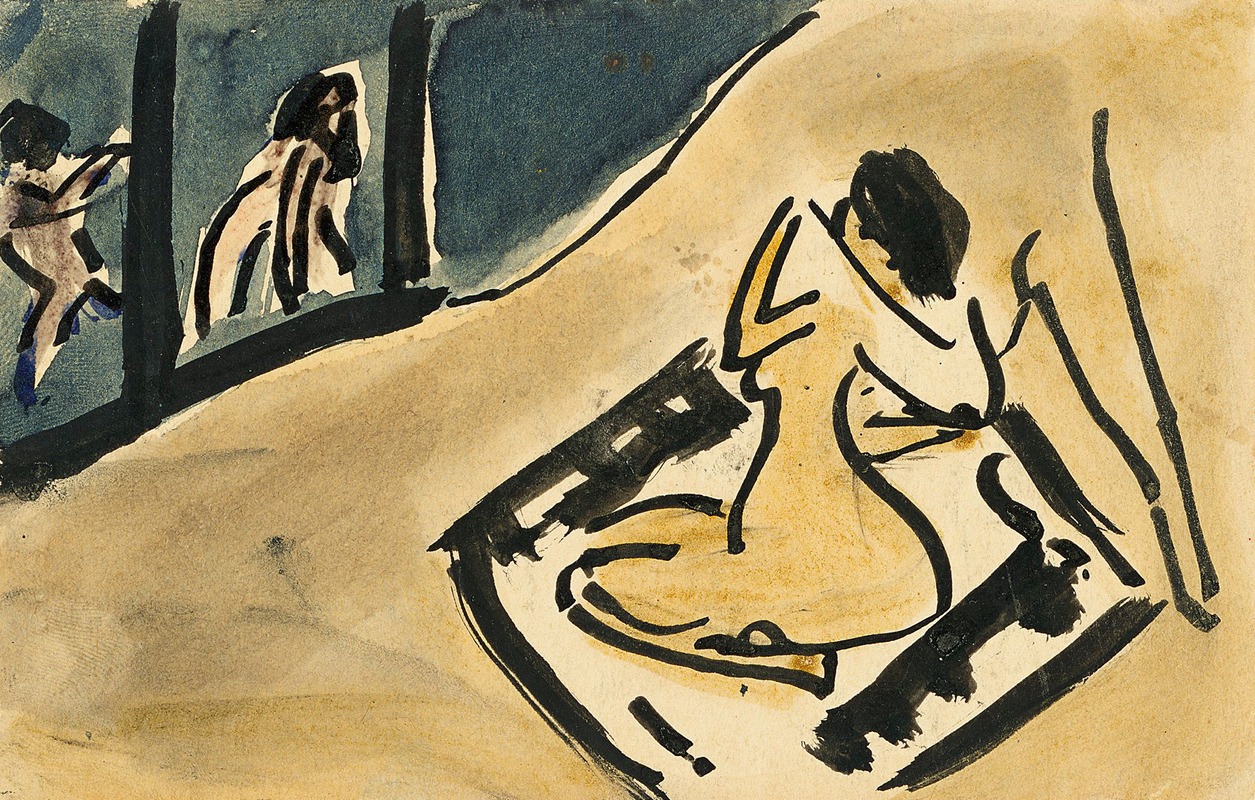
Badende, sich abtrocknend
A hand-painted replica of Ernst Ludwig Kirchner’s masterpiece Badende, sich abtrocknend, meticulously crafted by professional artists to capture the true essence of the original. Each piece is created with museum-quality canvas and rare mineral pigments, carefully painted by experienced artists with delicate brushstrokes and rich, layered colors to perfectly recreate the texture of the original artwork. Unlike machine-printed reproductions, this hand-painted version brings the painting to life, infused with the artist’s emotions and skill in every stroke. Whether for personal collection or home decoration, it instantly elevates the artistic atmosphere of any space.
"Badende, sich abtrocknend" (Bathers, Drying Themselves) is a painting by the German expressionist artist Ernst Ludwig Kirchner, created in 1910. Kirchner was a founding member of the influential artist group Die Brücke (The Bridge), which played a pivotal role in the development of Expressionism in the early 20th century. This movement sought to convey emotional experience rather than physical reality, often through vivid color, dynamic compositions, and a focus on the human figure.
The painting "Badende, sich abtrocknend" exemplifies Kirchner's distinctive style, characterized by bold brushstrokes and a vibrant color palette. The work depicts a group of nude figures, presumably women, engaged in the act of drying themselves after bathing. This subject matter is consistent with Kirchner's frequent exploration of the human form and his interest in scenes of leisure and nature, which were common themes in his oeuvre.
Kirchner's approach to the human figure was heavily influenced by non-Western art, particularly African and Oceanic art, which he and his contemporaries admired for its perceived authenticity and emotional directness. This influence is evident in the simplified forms and exaggerated features of the figures in "Badende, sich abtrocknend." The painting's composition is dynamic, with figures arranged in a way that suggests movement and interaction, a hallmark of Kirchner's work during this period.
The setting of the painting is likely inspired by the Moritzburg Lakes near Dresden, where Kirchner and other members of Die Brücke often spent their summers. These outings provided the artists with an opportunity to work en plein air and to explore themes of naturalism and the human connection to nature. The Moritzburg Lakes became a recurring motif in Kirchner's work, symbolizing a return to a more primitive and authentic way of life, away from the industrialization and urbanization of the time.
"Badende, sich abtrocknend" reflects Kirchner's interest in capturing the vitality and spontaneity of his subjects. The use of color in the painting is particularly noteworthy; Kirchner employs a range of bright, non-naturalistic colors to evoke emotion and to highlight the expressive potential of the medium. This use of color is a defining characteristic of Expressionism and is central to the impact of the painting.
Throughout his career, Kirchner faced numerous personal and professional challenges, including the trauma of World War I and struggles with mental health. Despite these difficulties, he remained a prolific artist, and his work continued to evolve until his death in 1938. Today, Kirchner is recognized as one of the leading figures of German Expressionism, and his paintings, including "Badende, sich abtrocknend," are celebrated for their innovative approach to form and color.
"Badende, sich abtrocknend" is held in high regard within the art community and is part of several public and private collections. It serves as a testament to Kirchner's skill as a painter and his ability to convey the complexities of human emotion through his art. The painting remains an important example of early 20th-century Expressionism and continues to be studied and appreciated for its artistic and historical significance.





